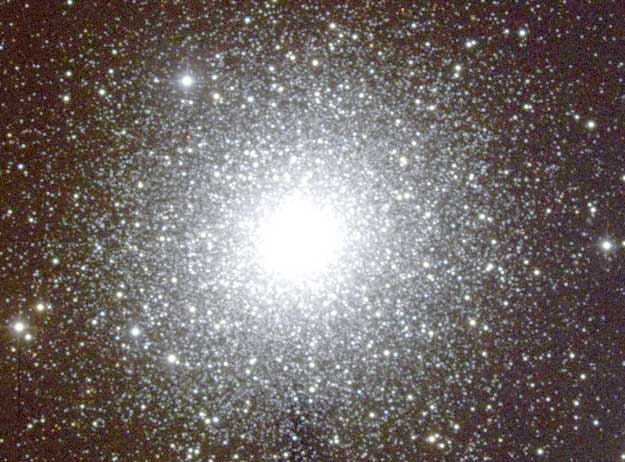 Globular Cluster M2
Globular Cluster M2
Credit & Copyright: D. Williams, N. A. Sharp, AURA, NOAO, NSF
First off:
| A lot of the Messier objects are globular clusters of stars: relatively bright and close, mostly old stars e.g. M2 in Aquarius: about 100000 stars |  Globular Cluster M2
Globular Cluster M2
Credit & Copyright: D. Williams, N. A. Sharp, AURA, NOAO, NSF |
| e.g. M3 (note lots of red giants) | 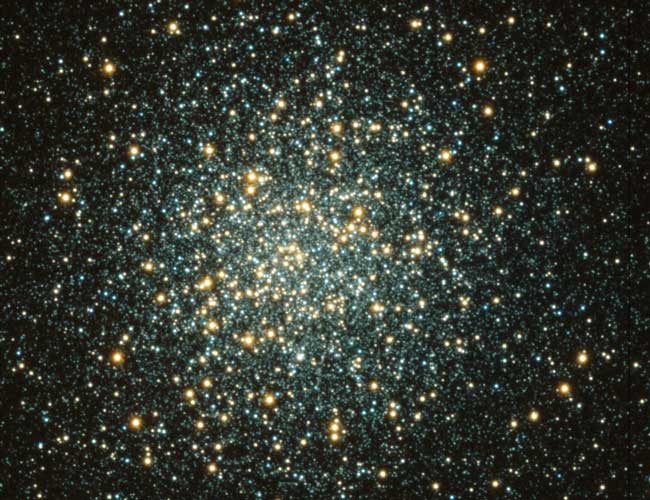 Credit & Copyright: S. Kafka & K. Honeycutt (Indiana University), WIYN, NOAO, NSF |
| There are about 200 round our galaxy: all galaxies seem to have them. THis is M87 (more about it later). It has about 1000 globulars. | 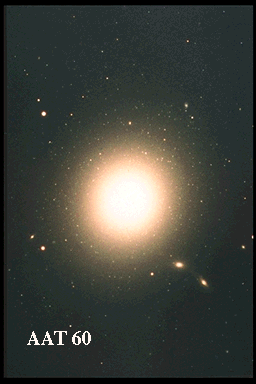
Credit: Anglo-Australian Telescope photograph by David Malin Copyright: Anglo-Australian Telescope Board |
| THese are quite easy to understand: stars swing in and out of centre. | 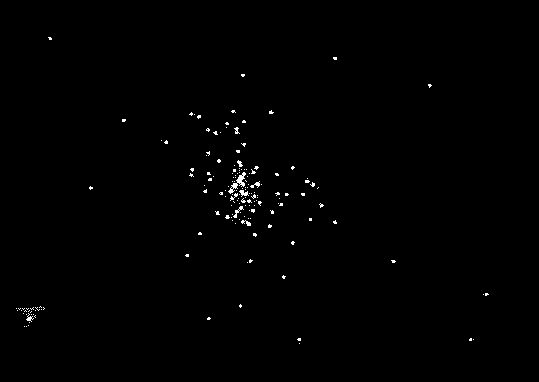 |
Approx. 109 (one billion) observed (!!!).
Approx. 105 well studied
Messier list contains about 100 galaxies.
New Galactic Catalog ∼ 10,000
Different shapes
| M87 is one of the largest: Note the spiral behind. (Stars have points on them) | 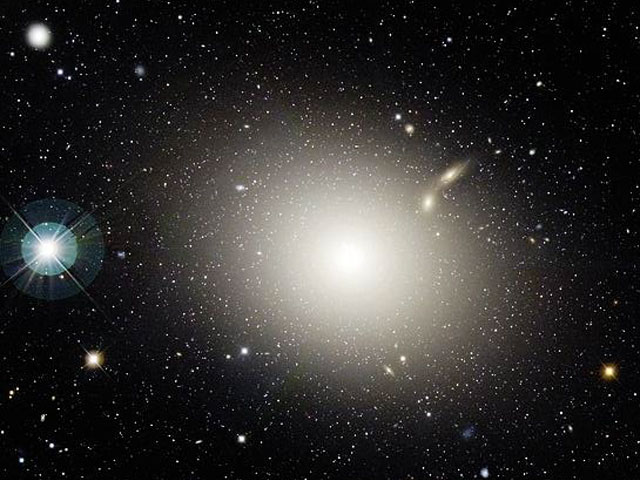 . . |
| Looks simple but...short exposure shows jet + very small core | 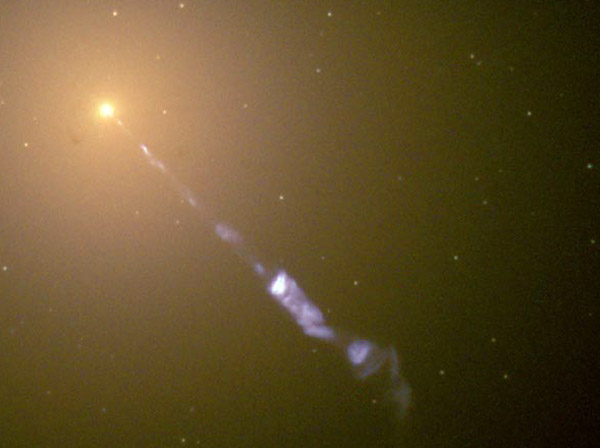 |
| And the jet looks more complicated the smaller the scale | 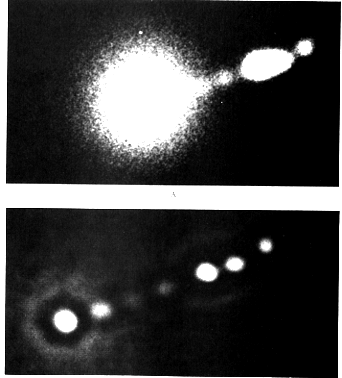 |
| and it seems to be related to radio "lobes" |  |
| The classic is M31 (Andromeda): tightly wound spiral with 2 satellites, a bit bigger than the Milky Way | 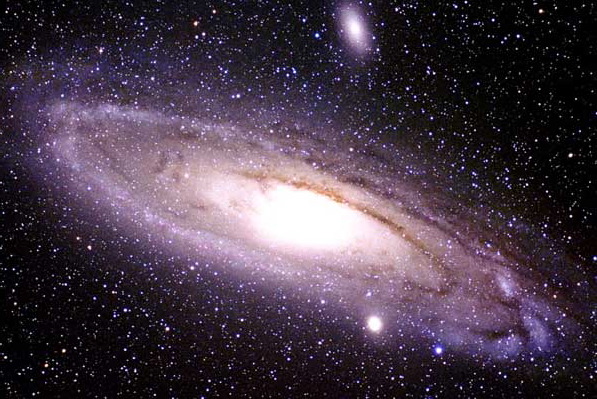 |
| Core maybe has two black holes and billions of stars: superimposed are knots of dust | 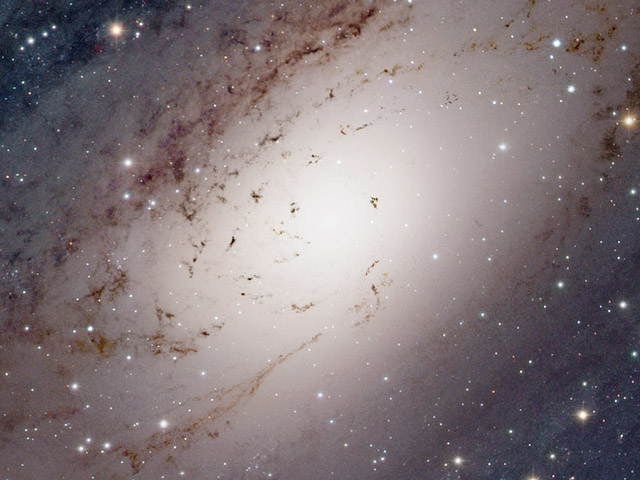
Credit & Copyright: Robert Gendler |
| Very bright in X-ryas, with an intense course at the centre | 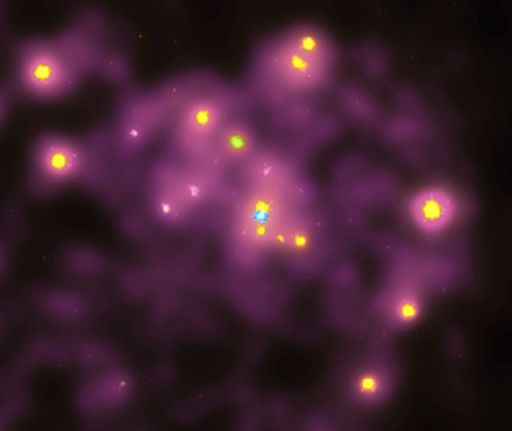 |
| This shows M51 along with Hurricane Julia: | 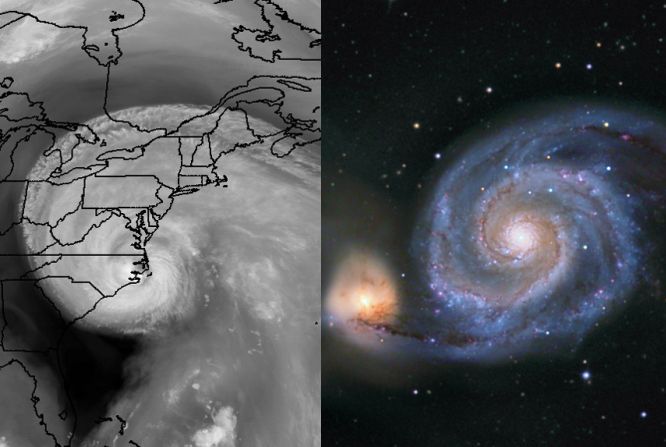 |
| NGC 1512 is an unusual spiral: tightly wound at the centre, with "star-burst" proceeding in a narrow ring | 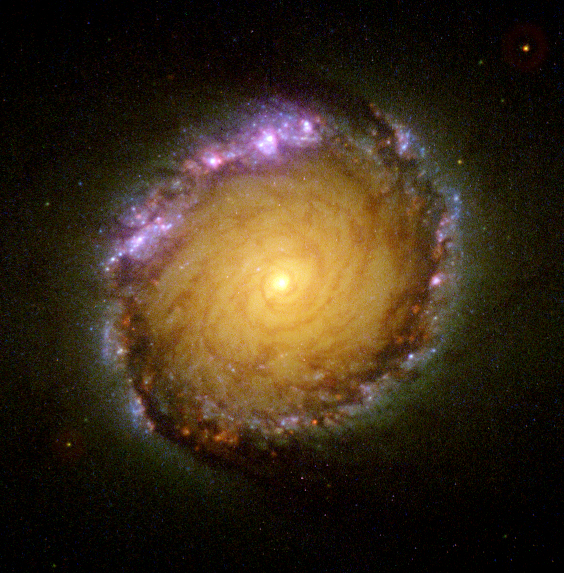 |
| NGC 6946: The Fireworks Galaxy. SHows the spiral structure for what it is: in this case, lots of new stars, (blue) and huge hydrogen clouds (red), and very bright small nucleus | 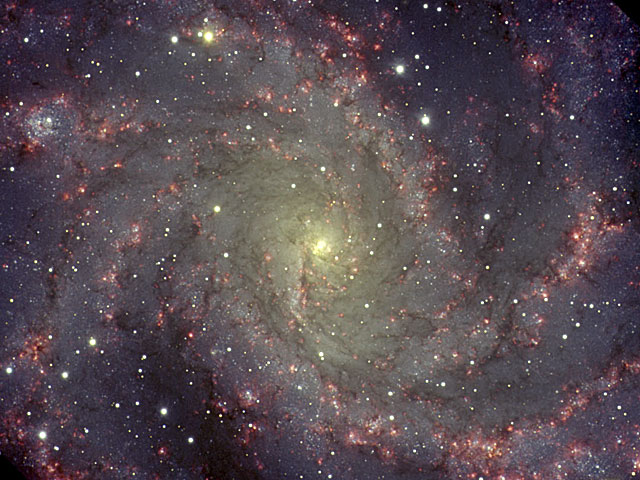 Credit & Copyright: T. Rector (U. Alaska Anchorage), Gemini Obs., AURA |
| M81 and M82 in Ursa Major make an intriguing pair: M81 seems to be destroying M82 via collisions | GALEX Full Field Credit: GALEX Team, Caltech, NASA 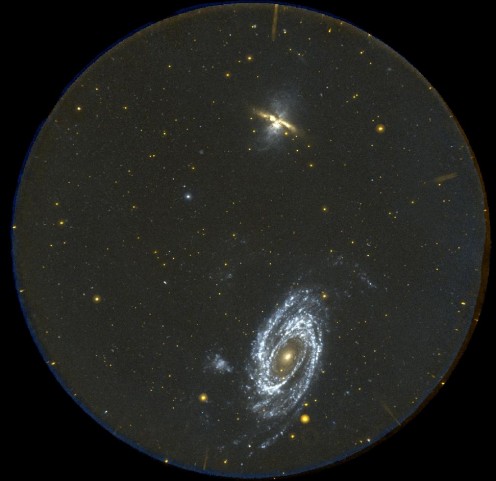 |
| Closeup of centre of M82 shows massive wind blowing out of centre of galaxy | 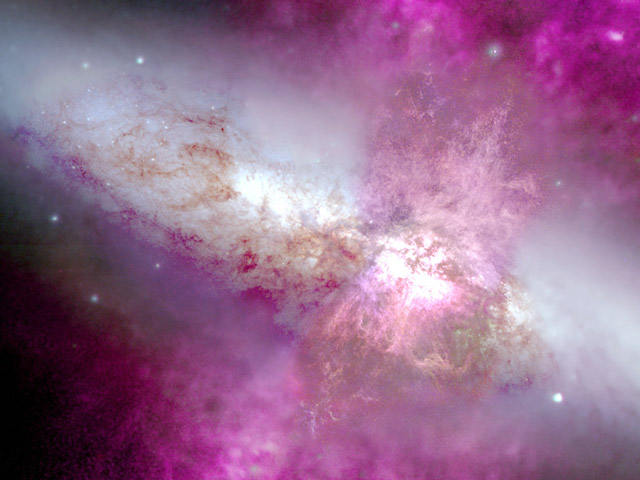
Credit: M. Westmoquette (UCL), J. Gallagher (U. Wisconsin-Madison), L. Smith (UCL), WIYN/NSF, HST, NASA/ESA |
This is SMC ∼ 106 stars |
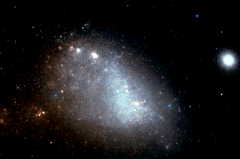 |
| These are 3 galaxies (in a group called Stefan's quintet) which are colliding | 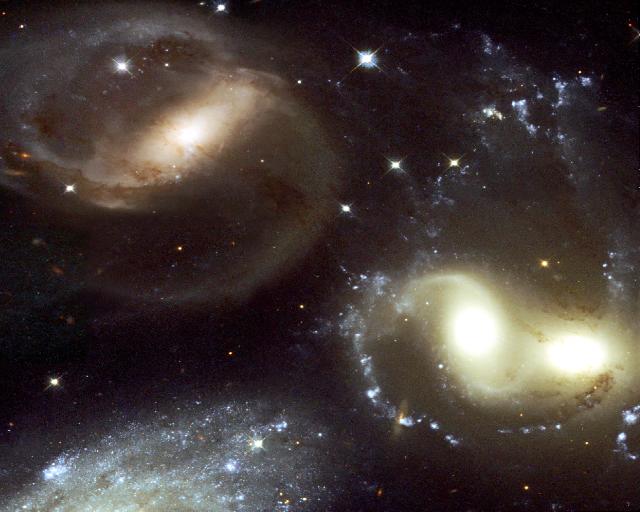 |
| "The Cartwheel Galaxy". Ring round (100000 lightyears across) consists of new stars produced in the collision with a smaller galaxy, which has now vanished. | 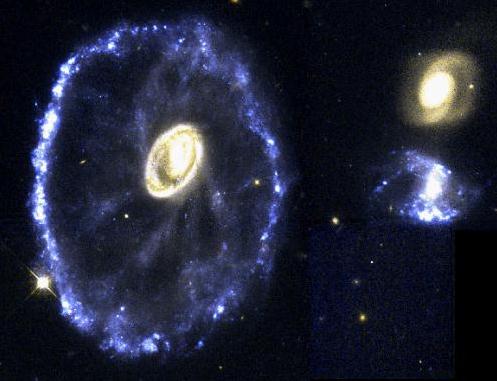 Credit: Kirk Borne (STScI), NASA |
| THe antennae galaxies are two very large galaxies in a violent collision: lats of stars being formed | 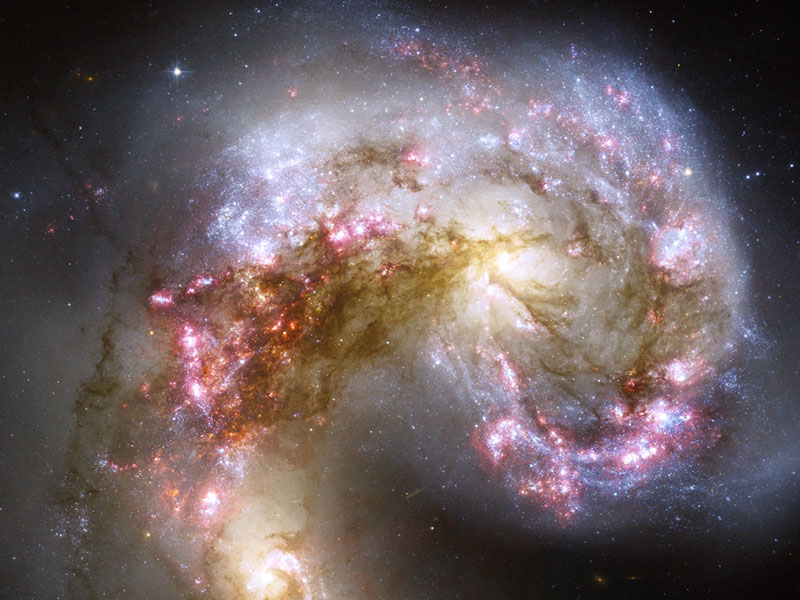 B. Whitmore (STScI), F. Schweizer (DTM), NASA
B. Whitmore (STScI), F. Schweizer (DTM), NASA |
| Not surprisingly the very hot gas produces lots of X-rays: this is the internal part of the antenna galaxies | 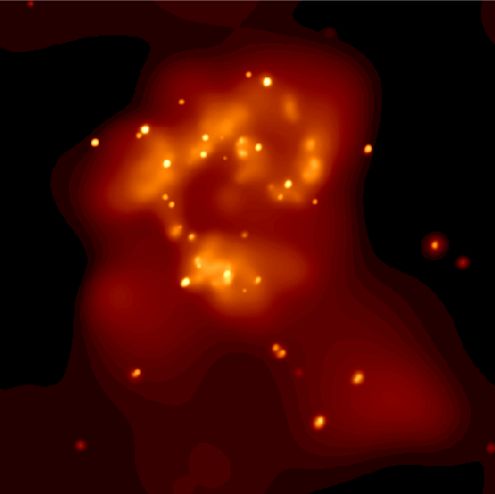 Credit: G. Fabbiano (CfA) et al., CXC, SAO, NASA |
| Centaurus A may be the result of the collision of two galaxies as well: lots of dust | 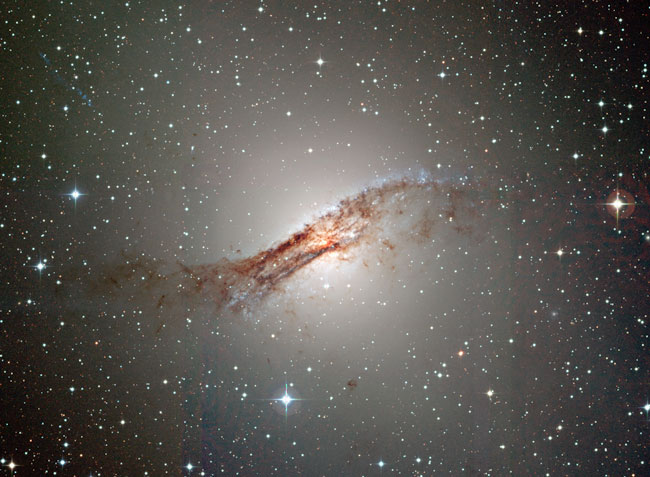
Credit: Marina Rejkuba (ESO-Garching) et al., ISAAC, VLT ANTU telescope, ESO Paranal Obs. |
| Closeup shows the star formation round the dust | 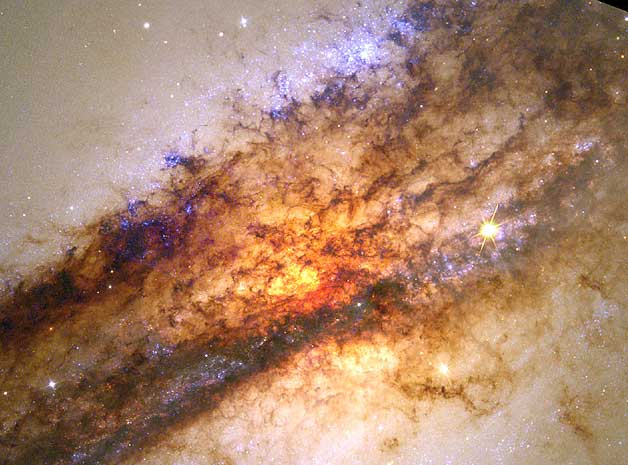 The Center of Centaurus A
The Center of Centaurus A
Credit: E.J. Schreier (STScI) et al., HST, NASA |